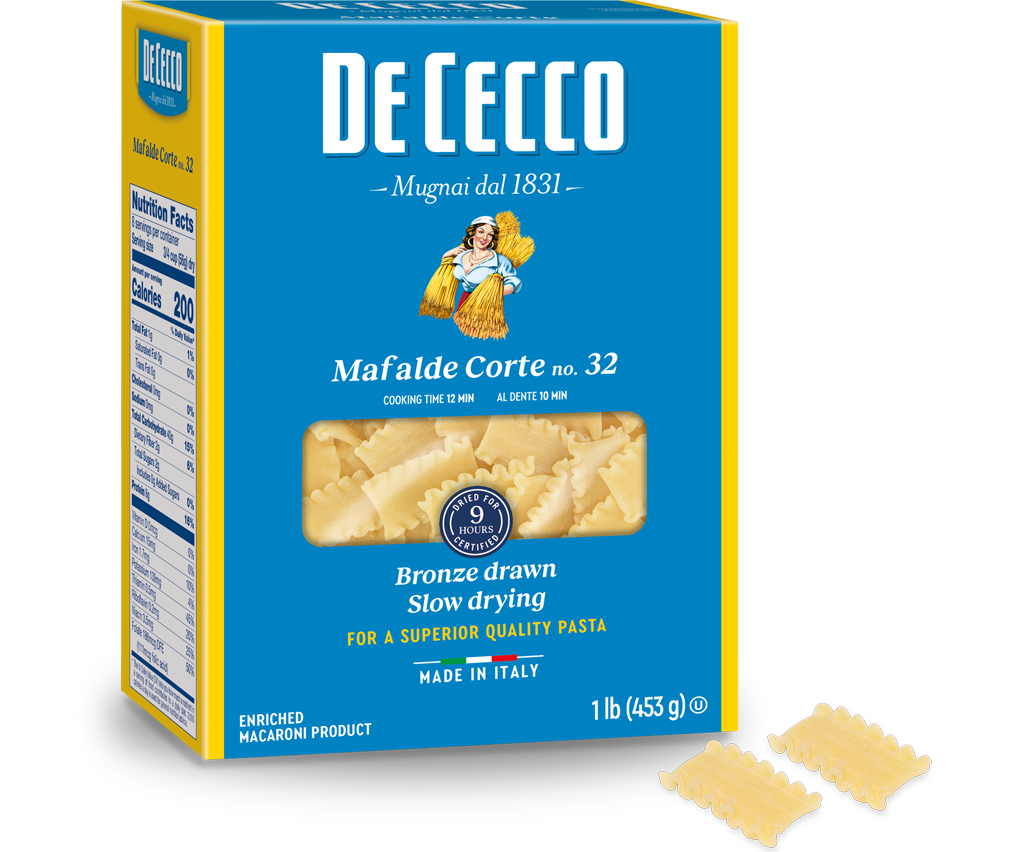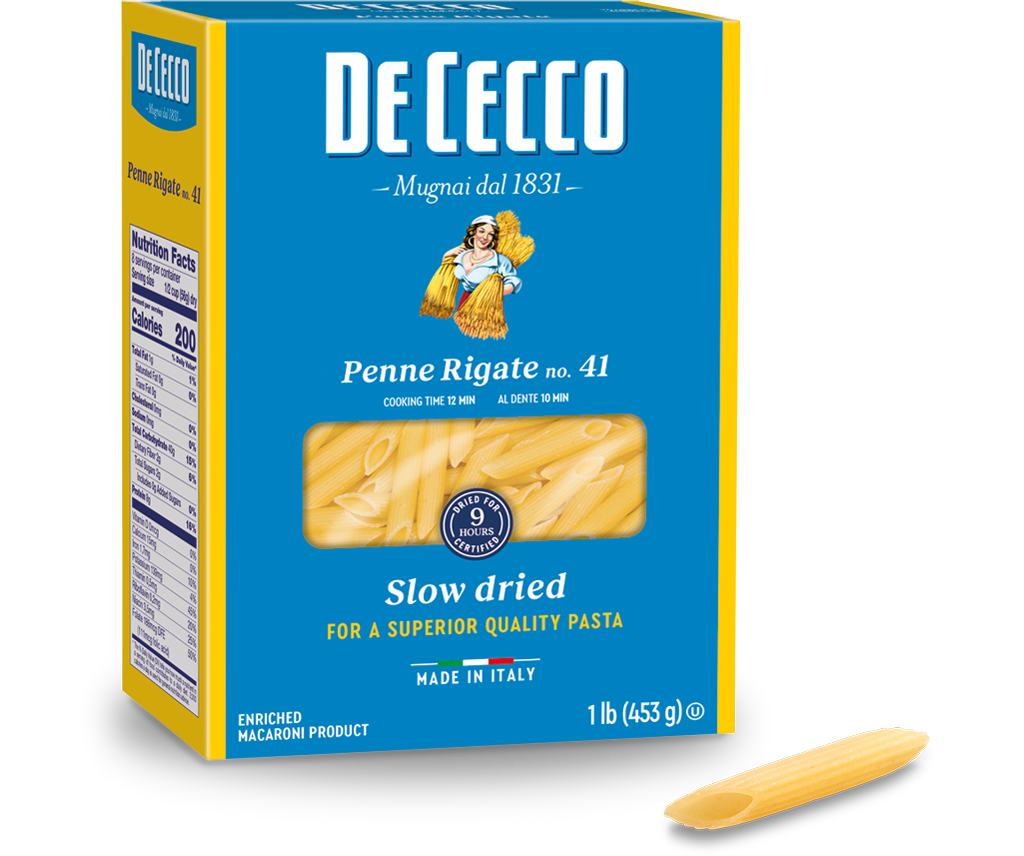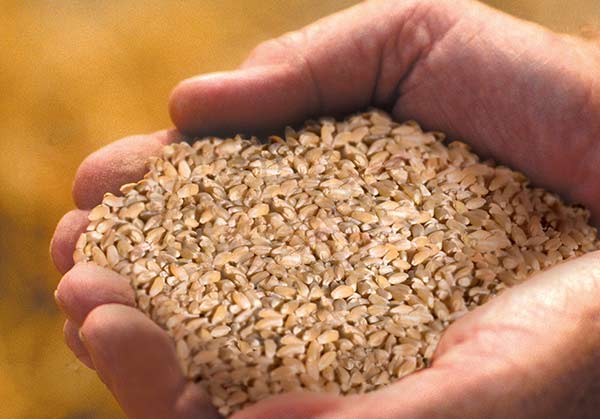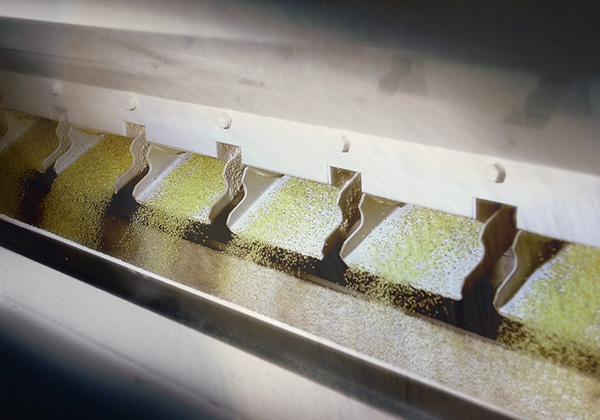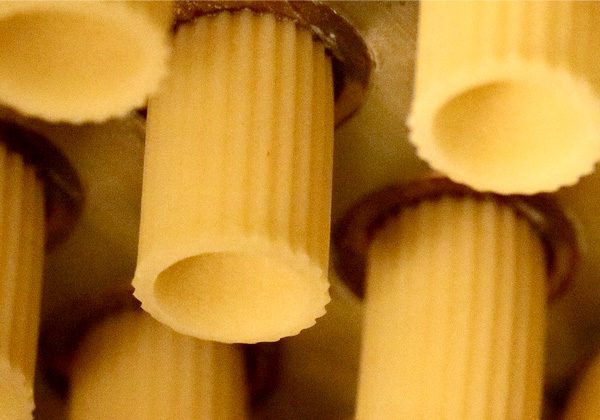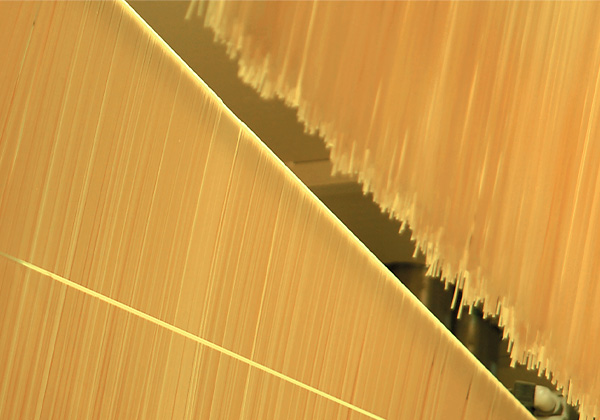Penne Rigate no. 41
Penne Rigate are part of the short, diagonal cut, ridged pasta family and are one of the most well-known type of pasta, as well as being the most versatile in the kitchen.
In Italian, the term "Penne" refers to the goose feather which was used historically to write with and was cut on a diagonal to achieve a really thin tip. The shape, obtained from a pasta tube, can be smooth or ridged, of varying length and has the typical diagonal cut of a quill.
Penne are one of the few types of pasta for which there is an exact date when it was created. Indeed, in 1865, a pasta-maker from San Martino d'Albaro (Genoa), Giovanni Battista Capurro, requested and obtained a patent for a diagonal cutting machine. The patent was important because it meant the fresh pasta could be cut like a quill without crushing it and in different lengths from 3 to 5 centimetres (mezze "half" penne or penne). The document preserved in the Central Archive of the State of Rome reads: "Up until now, a diagonal cut could only be made by hand with a pair of scissors which, in addition to being slow and time-consuming, also resulted in an irregular cut which flattened the pasta".
Penne Rigate are perfect for preparing oven-baked pasta or pasta dishes served with meat sauces made from pork or beef. This pasta is equally as good with vegetable based sauces and more in general, due to its versatility, for any recipe from the Mediterranean tradition, such as the classic condiment with tomato, basil, extra virgin olive oil and a sprinkling of parmesan. A classic combination is with Arrabbiata sauce.
Available in 16.0 oz and 5 lb.
- Cooking time: 12 min - Al dente: 10 min
Guarda il video
Our method
Attention, care, experience and quality during every phase: from our mill to your table.
You may also be interested in
Mafalde Corte no.32
The Mafalde Corte belong to the family of short curly pasta and are characterized by the shape of curled tape on both sides.
Of Neapolitan origin, once they were called Fettuccelle Ricce, while today they are also known by the names of Reginette or Reginelle: it was the Neapolitans who dedicated them to Princess Mafalda of Savoy, thus being renamed Mafaldine or Reginette in her honor.
Given the irregular shape, le Mafalde Corte like all curled pasta, once the cooking is completed, have the characteristic of having a unique consistency due to the diversity between the smooth and curly part that allows the latter to better retain the seasonings.
Traditionally Mafalde Corte are suitable for the preparation of soups and soups of legumes, but they are particularly tasty with creamy tomato sauce accompanied by buffalo ricotta.
Available in 1Lb pack.
Find out more
